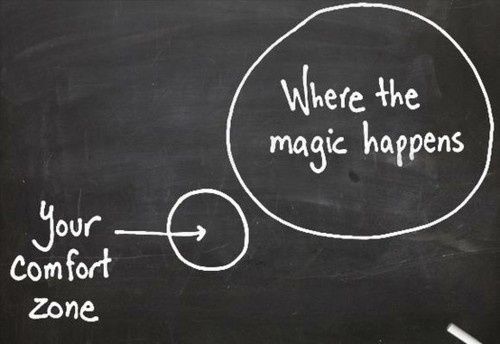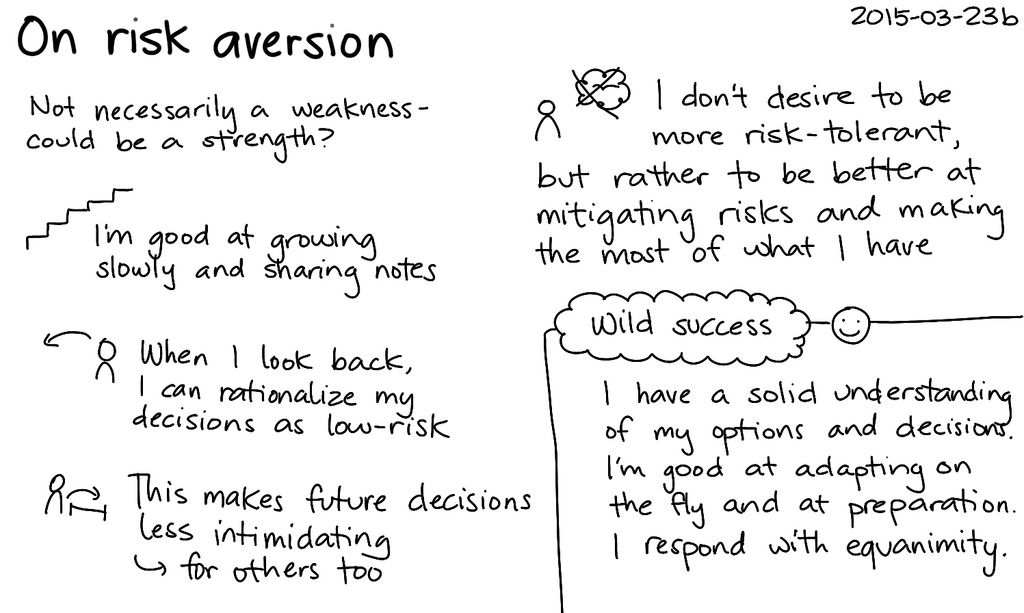Playing it safe is a good strategy for much of the time. Yet, the biggest rewards often come with an element of risk. If we want our designs and our careers to take off – we need to overcome our aversion to taking an extreme option at times. That doesn’t mean becoming an inveterate gambler but rather learning to weigh up our options and occasionally choosing a riskier decision based on the possible pay off.
The idea of extreme aversion is simple; it’s the idea that people will go to great lengths to avoid choosing an option that lays on the extremes of thinking. In essence people would rather choose the “safe option” and take a middle path than pick something on the edges of possibility.

Author/Copyright holder: oklanica. Copyright terms and licence: CC BY-NC 2.0
This bias is often manipulated by design; for example you can provide a customer with 3 options when making a purchasing decision (cheap, mid-range, expensive) and expect that the majority will choose the mid-range option and thus increase your margins compared to a “cheap” choice. You can also use the same concept to “force” users to take a particularly choice when navigating or using an application.
Extreme aversion comes from the research conducted by Daniel Kahneman et al. in economics. The example given below is based on this research. Kahneman is a psychologist known for his work on the psychology of judgment and decision-making. He was awarded the 2002 Nobel Memorial Prize in Economic Sciences for his research on behavioral economics.
Is Sensible?
Imagine that you could go back in time 50 years. When you arrive you are given $100,000 and you are given the opportunity to invest that money for your future self. Your choices (as they are laid out for you) are to put the money under a mattress (the safest option), to put it in a bank (the mid-range option) or to invest in real estate (a risky option).
You’re unlikely to stick the money in a mattress after all – there’s no reward for doing so. However, you’re probably much more likely to put the money into a bank than into real estate. This is a shame because real estate over the last 50 years has massively outperformed the returns on even the best savings accounts.
An aversion to an extreme option is not always the best choice. You can translate this into other areas of life too, not just investment. For example; you might be faced with the decision as to whether to go freelance in your design career – you might summarize your options as:
A. Keep my job – it’s too risky to freelance
B. Keep my job but do a little freelancing on the side – that way if things don’t work out, I won’t lose anything
C. Quit my job – I’m more likely to be successful as a freelancer if I can give my full attention to it
Let’s be fair about this; option B (above) is the safe option. It means there’s little risk to you if things go wrong as a freelancer. However, it’s also not always going to be the best choice.
It’s very difficult to do two jobs at once. We get tired, we underperform. It’s also going to be very challenging to find clients if your current job involves working from 9 to 5 and Monday to Friday.
While, the safe option provides little risk, it also provides little in the way of upside. Most people want to freelance because it gives them the freedom of choosing what projects they work on and working in the way that they want to. If you still have a job… you’re going to be limited as to what projects you can work on and for a lot of the time, you’re going to have no say in what you do.

Author/Copyright holder: Sacha Chua . Copyright terms and licence: CC BY 2.0
While extreme aversion can be very useful for you as a designer when you want to increase sales through a website or to ensure that a customer takes a particular option in an application – it’s not always the best strategy for dealing with life in general.
Dealing With Extreme Aversion
The question you need to ask yourself is; “What am I really hoping to get out of this decision?” followed by; “Which option is most likely to bring about that result?”
This requires a certain level of personal honesty and it can be challenging the first few times you review your decision making process. For some of us, security is the most important thing and choosing not to go freelance in those circumstances is pretty sensible. For others, it’s going to be the freedom that’s most appealing and going freelance is very much the right decision in our example.
If you find that you can’t differentiate these things clearly; you could always try working with a coach. They can help you ask the tough questions and really explore your own motivations so that you can find a way forward. It doesn’t mean that an extreme option is always the right option but opening yourself up to the possibility does mean that you may be able to make the right decisions when it is.
The Take Away
There are times to play it safe and times to take a risk. Learning to overcome extreme aversion means learning when to take a calculated risk. It’s a way of improving your life and getting more from your efforts.
You can also learn to use extreme aversion in your designs and that’s going to make it much easier to show returns on investment.
References & Where to Learn More:
Kahneman and Tversky’s paper “Loss Aversion in Riskless Choice: A Reference-Dependent Model.”
An example of extreme aversion is analyzed at a higher level: “Extremeness Aversion and Attribute-Balance Effects in Choice.”
Hero Image: Author/Copyright holder: Unknown. Copyright terms and licence: Unknown.












